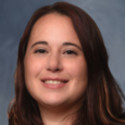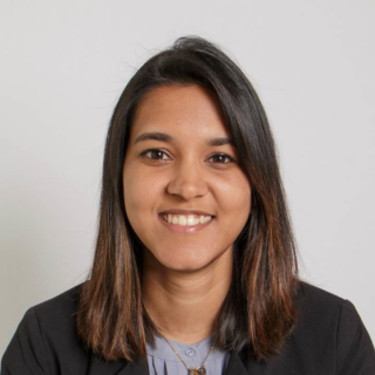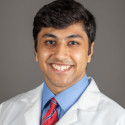The American Society of Breast Surgeons (ASBrS) has long championed the use of breast ultrasound by surgeons. Since its early days, the Society has actively developed guidelines and certification opportunities for its members, even working alongside—and at times in competition with—radiology to ensure that surgeons are well-equipped to utilize this crucial technology. To promote the widespread adoption of breast ultrasound, ASBrS has established robust educational sessions aimed at training surgeons in this essential skill.
Twenty-four years ago, under the leadership of then-president Dr. Mark Gittleman, ASBrS launched its educational initiative in breast ultrasound, which later expanded to include regional courses and formal certification. In recent years, the Society’s pre-meeting course, “Breast Ultrasound: An Introductory/Refresher Course,” has become a fixture at the annual meeting, widely attended and highly regarded. This course is considered the premier ultrasound training opportunity for surgeons, evolving over time to incorporate technological advances and member feedback. The current format includes a series of pre-recorded videos on ultrasound physics, indications, and techniques-reviewed prior to the meeting, followed by in-person lectures on ultrasound findings and pathology correlation, and culminating in a half-day hands-on session. During this session, participants practice scanning techniques on live models and perform biopsies and localizations on silicone molds.
This year’s course attracted both early-career and seasoned breast surgeons, many of whom are seeking to integrate ultrasound into their practices. With radiology shortages affecting some states and hospital systems, breast surgeons are increasingly called upon to perform image-guided breast biopsies for cancer detection. Ultrasound also plays a vital role in guiding surgeries and assessing margin status after lumpectomies. Moreover, advances in breast cancer treatment—such as cryoablation, vacuum-assisted tumor excision, and intratumoral drug delivery—underscore the importance of ultrasound proficiency for surgeons.
Despite its value as a basic and cost-effective tool, many surgeons still lack formal training in breast ultrasound. Fortunately, ultrasound education is now beginning as early as medical school, along with general surgery residents gaining experience during trauma and ICU rotations. However, a gap remains in breast ultrasound education among practicing surgeons, making courses like the ASBrS ultrasound course essential for ongoing professional development.
This year’s ASBrS ultrasound course was moderated by Drs. Michele Carpenter and Daniela Ochoa with over 20 volunteer faculty members, several ASBrS staff members, at least 5 sponsors, and 60 learners. ASBrS also offers training in both ultrasound and beginner oncoplastic techniques to breast surgical fellows annually in a separate Fellow’s course at no cost with the assistance of Mammotome at their education center in Cincinnati, Ohio. With the help of these courses, new breast surgeons can begin their surgical practices equipped with essential ultrasound and oncoplastic skills.
At the general session of the Annual Meeting, multiple speakers highlighted the need for surgeons to adopt breast ultrasound skills to keep pace with advances in breast cancer treatment. Dr. Helen Pass, in her renowned “Best Papers” lecture, emphasized that many of the most significant advances in breast cancer care will be realized through surgeon-performed ultrasound. In her Presidential Address, Dr. Judy Boughey also stressed the importance of surgeons mastering breast ultrasound techniques. As minimally invasive approaches become more prevalent, proficiency in ultrasound is increasingly vital for implementing new treatment paradigms in breast cancer care.
The ASBrS breast ultrasound certification program is designed to improve patient care by encouraging education and clinical competency among surgeons. Certification requires board certification, documented training and experience, completion of a minimum number of ultrasound exams and mammography reviews, and at least 15 AMA Category 1 CME credits in breast ultrasound, including a full-day hands-on course. The American College of Radiology recognizes ASBrS certification as a qualification for working in ACR-accredited facilities.
By offering comprehensive educational and certification programs before and during the annual meeting, ASBrS continues to lead in equipping breast surgeons with the skills necessary to provide high-quality, advanced care for patients with breast disease.
Dr. Nimmi S. Kapoor is a fellowship trained breast surgical oncologist and associate professor of surgery at UCLA. Dr. Kapoor reports receiving grants from the Association of Women Surgeons Foundation, Jonsson Comprehensive Cancer Center, and BTX/Hologic Investigator Initiated Project. Dr. Kapoor has also received consulting fees or honorarium from IceCure Medical Inc, Elucent Medical, and Aura Medical, travel support from Viewpoint Medical, and honorarium for visiting professor grand rounds.
Dr. Michele Carpenter is a general surgeon in Orange, California, specializing in breast surgery and oncoplastic breast surgery. Dr. Carpenter received honorarium as Co-Moderator for the above mentioned course, "Breast Ultrasound: An Introductory/Refresher Course," but otherwise has no financial interests or conflicts of interest to report.
Image by Peakstock / Shutterstock






